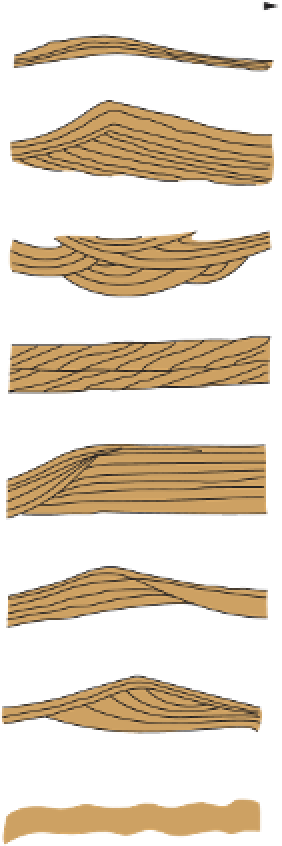Geology Reference
In-Depth Information
Gently sloped wave of generally long
wavelength, low amplitude often grading
laterally into planner beds, and found as
faint laminations in fine-grained massive
beds.
Relatively symmertrical antidune shape,
built up on the stoss side, elongated on
the lee side, with one more marked
inner unconformities.
direction of transport
Festonned dunes; direction of transport
is perpendicular to the plane of the paper.
Cross laminations occurring in bedding
sets 2 to 8 cm thick.
Chute and pool structure with coarse-
grained, steeply dipping stoss side.
Symmetrical dunes with lee side
accumulations of coarse material.
Antidunes with rounded crest and internal
unconformities.
Sinusoidal ripple-drift laminations of short
wavelength.
Figure 5.3
Morphologies of structures commonly found in low-density pyroclas-
tic flow deposits.
modern deposits. Deposits are commonly poorly sorted, bi-poly modal and a
classification using combination of different clast sizes is given in Figure 5.7.
Juvenile vesiculated fragments
(Figure 5.8a,b) range from highly vesiculated
pumice (density may be less than 1000 kg m
−
3
), through less well vesiculated
juvenile fragments, sometimes termed 'expanded andesite or dacite' (density























